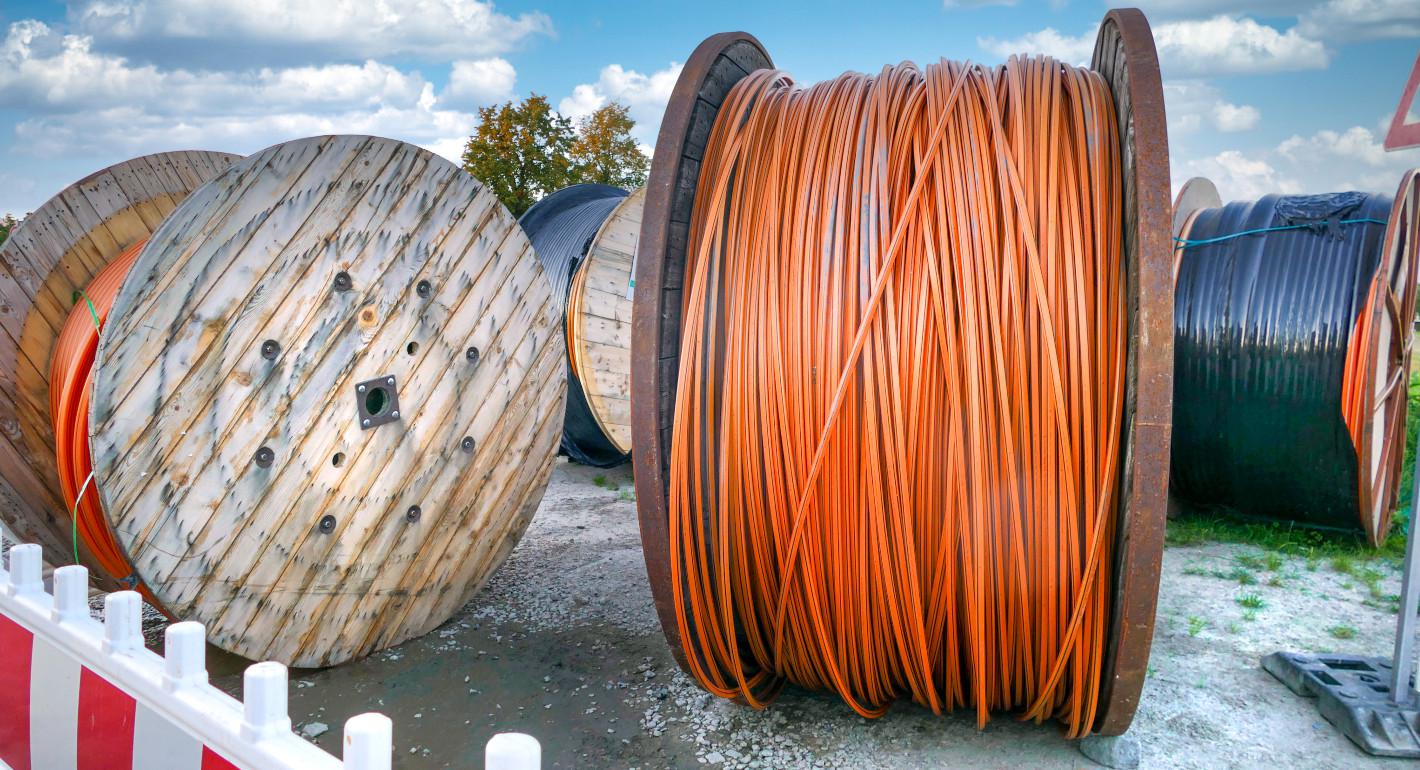Calling access to broadband a “necessity” at the White House podium this summer, President Joe Biden promised “we’re not going to leave anyone behind.” Despite this lofty ambition, historic disinvestment and geographic idiosyncrasies have resulted in vastly unequal ability to access the internet, leaving some populations with much further to catch up.
The FCC defines internet service as “broadband” if consumers have access to download speeds of at least 25 Megabits per second (Mbps) and upload speeds of at least 3 Mbps. A more robust standard, one that the FCC chairman has publicly advocated for, is 100 Mbps for downloads and 20 Mbps for uploads. The much debated 25/3 standard represents a broadband floor that nearly 20 percent of residents on tribal lands fall below.
As a result of its size and geography, California has more unserved households than any other state in the nation. This so-called digital divide is especially endemic on tribal lands in California, with over a quarter of households lacking any broadband service at 100 Mbps speeds. When broadband is available, it is often unstable. Situated in a remote, densely forested, and mountainous area in Northern California, the Hoopa Tribe suffer weather-related power outages and wildfires that frequently disturb the basic communications infrastructure needed to maintain emergency services to check on vulnerable populations and to receive critical status updates. Last summer, the confluence of a fire and severe storm knocked out the only service available—wireless broadband—for three days, delaying critical response times and impacting the tribe’s ability to conduct a damage assessment. For the Hoopa Valley Public Utilities District (HVPUD)—the entity that provides water and internet on the reservation—the lack of underground fiber infrastructure means it cannot guarantee robust, resilient connectivity in times of crisis. The Hoopa Tribe’s experience is not an anomaly.
The federal government has administered several programs to incentivize companies to build broadband infrastructure in unserved and underserved tribal areas. Two federal agencies have focused broadband grant programs on tribal nations that together make a total of $1.98 billion available to tribal communities to conduct engineering and network design plans. At the state level, the California Public Utilities Commission established a $5 million Tribal Technical Assistance grant program of $150,000 per tribe per fiscal year to assist them in developing market studies, feasibility studies, and/or business plans that support their pursuit of improved broadband infrastructure and broadband adoption.
California’s Senate Bill 156 pushes public dollars beyond the dispersal of funds. The bill allocates $3.25 billion to create an open-access middle-mile network to bring equitable high-speed broadband service to all Californians. The state-owned fiber infrastructure will act as an internet highway to which private companies can connect to provide direct service to the local communities. Like the Hoopa, many tribes lack affordable, resilient underground fiber infrastructure, leaving last-mile networks either stranded or economically unfeasible. The state’s middle-mile network closes the distance on the digital divide by narrowing the fiber gap, bringing the internet highway closer to remote locales.
HVPUD and the state of California signed an agreement to jointly construct a section of the state’s middle-mile network. The agreement came about through collaborative work by the California Department of Technology, the HVPUD, and CENIC: Goldenstatenet. (Disclosure: The authors are employed by these organizations.) The project builds on an executive order in which California issued an apology to the state’s Native Americans for the many instances of violence, maltreatment, and neglect California inflicted on tribes. The tribal-state relationship depends on many factors, but the most important is the governor’s recognition of the tribes within the state boundary and the inclusion of those tribes in the state’s efforts to build for public good.
Beyond the prohibitive costs of undergrounding fiber infrastructure, the challenges tribes face with regard to broadband access and managing an internet service provider are common. Tribes have been continually left out of incentive programs and subsidies provided to telecommunications incumbents and are forced to devise their own solutions for service. Like many rural communities, remote tribes lack access to technical expertise and specialized networking skills.
What tribes may lack in specialized telecom expertise, they make up for in local experience operating services in remote, rugged terrain. HVPUD has provided critical utilities to the Hoopa community for more than forty years, and the broadband division expansion only strengthens the tribe’s self-determination and sovereignty goals of providing essential services to its nation. Additionally, HVPUD’s extensive knowledge of the geography and cultural significance of the Klamath River Basin area ensures that the collaborative project is completed in a manner that is respectful of the environment and the tribe’s cultural values.
With the appropriate resources and incentives, tribes can train and employ local community members who are invested in improving access to high-speed internet and upgrading infrastructure within tribal lands. In the middle-mile partnership with the state, the Hoopa Tribe is training members who will be responsible for the maintenance of the state’s network expansion. Tribes like the Hoopa are using the “once-in-a-generation broadband funding programs” to bridge the digital divide and ensure a resilient network for their communities.
The state of California and the Hoopa Tribe are stretching funds from federal, state, and local programs to build public digital infrastructure. The goal is not to supplant private investment but encourage the private sector by providing the necessary precondition for broadband expansion to reach previously unserved and underserved communities. With the middle-mile broadband initiative, in coordination with partners like the Hoopa Tribe, the state is reshaping the role of the public sector beyond a regulator or safety net. As a nonbiased facilitator in the market, the state is attempting to pave a path toward digital equity.



